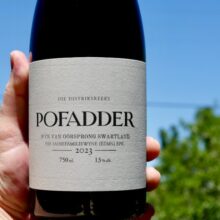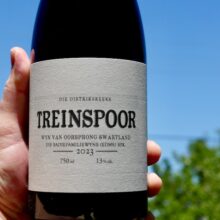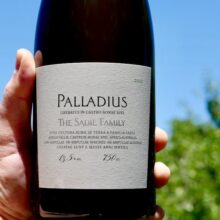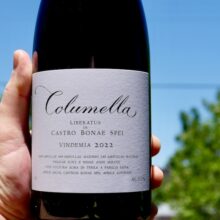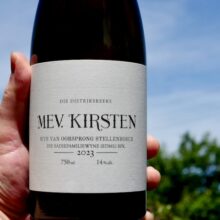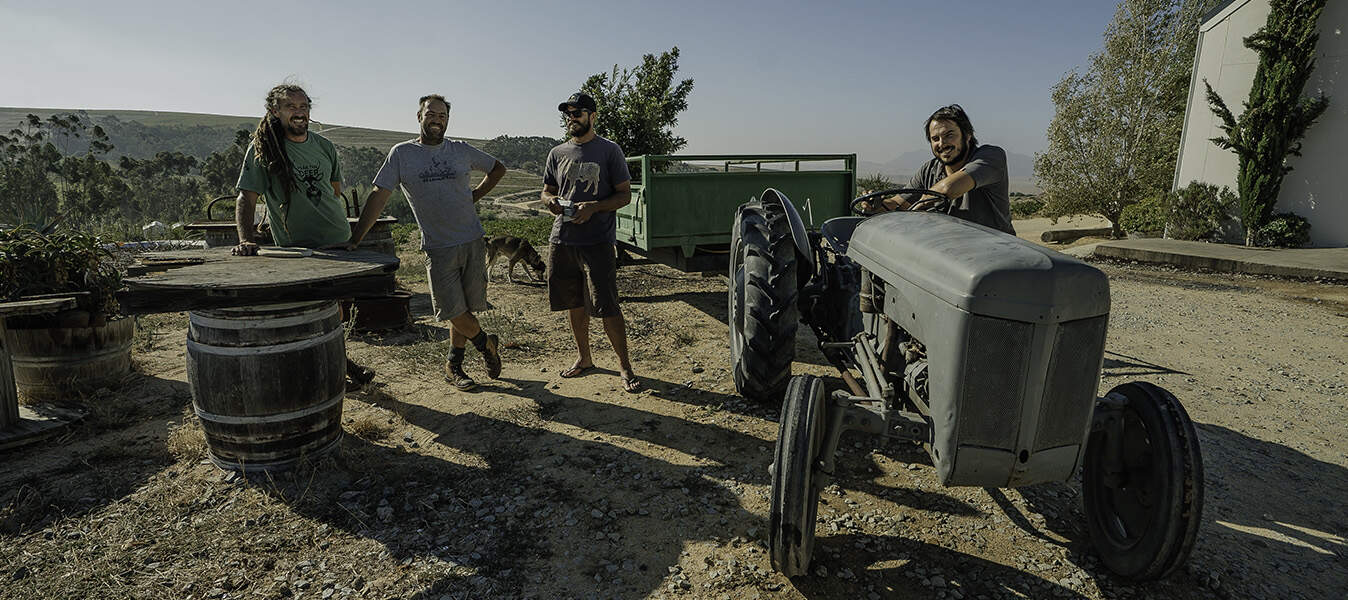
Winery
Sadie Family
About Sadie Family Wines
Researching Sadie has been a fascinating task. A melange of philosopher, surfer, scientist, farmer and winemaking, Sadie will never be accused of the ultimate wine sin, to make boring wine.
Many of us will be used to hearing of the benefits of high-density vineyards, yet Sadie has moved away from this approach, demonstrating deep thought for the constraints of the 53 sites across Swartland and Citrusdal Mountain he works with.
They don’t have enough water, they don’t have the power to supply pumps even if they had dams for water to irrigate, so he chooses sustainable, regenerative, biological farming to grow within the resources available: water, nutrients, and sunshine.
Once again, this demonstrates that the way is never simple with wine and must consider each unique circumstance.
Grape first wines that are sophisticated, radiant, expressive with refined textures, shape and flow.
The end results in bottle are fascinating. There are varieties we are familiar with in Australia: Grenache, Chenin Blanc, Cinsault and then others we are less familiar with Tinta Barocca (typically used by the Portuguese in there production of Port), and for his top white, Palladius, and red, Culumella, blends with variety numbers that rival Châteauneuf.
“…until 2009 we made wine like you make coffee, since then we have made wine like you make tea.”
Eben Sadie
Sweeping generalisations aside these are refined, elegant wines revealing grace under pressure.
“…That these rare and beautiful bottlings continue to be sold at prices that would not encourage a Bordeaux Classed Growth proprietor out of his bed each morning is still quite unbelievable, especially when you’ve seen the passion and commitment up close.”
Neal Martin
“The wines shine through with a level of magnificence that is simply stunning [although the] wines are tough to find as most of these wines are on allocation.”
Anthony Mueller, The Wine Advocate
In the Vineyard
The Sadie Family team work with roughly 30 hectares of vines, one-third of which are estate, with the other vines farmed entirely under their control. This is quite the undertaking when you consider, at their furthest point, the vineyards lie some 250 miles apart and are spread across 53 separate parcels. Then consider that everything is dry grown and organically farmed and that each parcel, having different geologies, aspects and often grape varieties, will require different management. These vines, (from overwhelmingly old parcels), lie mostly on the high-altitude slopes of Swartland’s Atlantic-influenced mountains, one hour north of Cape Town on the Western Cape. The terroirs include Paardeberg Mountain (on granite), Riebeek Mountain (slate), Piquetberg (sandstone and quartz), Coastal Plain (chalk) and Malmesbury (Glenrosa clay). Further afield, several of the Old Vine Series plots fall outside of the Swartland WO, notably Soldaat in the Piekenierskloof highlands and the Skurfberg vineyards in Citrusdal Mountain.
While the terroirs differ significantly, Sadie notes, in general, that he’s farming with very old, low fertility, decomposed soils which are exceptionally demanding to work. With poor soils, an absence of irrigation and old vines, yields are naturally tiny—25 hl/ha at best—and three consecutive drought years have seen these figures drop far lower. There are no chemical additives to either the vines or the soils—a philosophy which extends to the cellar. Sadie’s key challenge in the vineyard, he notes, is preserving the grape’s acidity, freshness and purity—a challenge that starts in the vineyards with building the (previously neglected) soils’ life through inter-planting and organic composting. Whatever he’s doing, it’s working as the wines lack for nothing when it comes to energy and freshness.
Sadie’s Domaine has increased with new plantings on the West Coast (near the Skerpioen vineyard), and there’s a new project in the Cedarberg Mountains. Then, there are two extensions at Rotvas (Sadie’s home farm in Paardeberg) where the fruit is destined for Columella and Palladius. These vineyards bring Sadie’s holdings to nine hectares—still small, yet spaced over a huge distance of some 400 kilometres. Eben has bought in vineyard manager, Morné Steyn and viticulture consultant Jaco Engelbrecht to manage the increased workload. Despite this increase, Sadie notes that with these new sites, the aim is not necessarily to make more wine. Instead, it’s in planting a plethora of Mediterranean varieties more suited to Swartland’s ever-drier climate—including Vermentino, Picpoul, Marsanne, Grenache Blanc, Cinsault Blanc and Assyrtiko. He hopes these vineyards will help The Sadie Family adapt to the ongoing challenges of global warming and climatic shifts.
In the Winery
Sadie’s winemaking philosophy has evolved considerably over the years and his wines have become far purer, better balanced and now offer wonderful transparency of place. There is almost zero new oak in the cellar and these days extraction for the reds is limited to foot-stomping, the odd, irregular punch down and, what our own Dave Mackintosh calls, jugotage, whereby the team scoop the free juice over the top of the whole bunch ferments. All the wines are spontaneously fermented and there is no stainless steel, only concrete vats, a few eggs and mostly large format oak. Sadie uses no sulphur additions until the very end of the aging — and there are no other additions for that matter — with a final total that he finds is the minimum for aging and travelling. All the wines clarify naturally and are bottled without filtration.
If you knew the wines in the early days, be prepared for a shock, they are totally different today. In short, they are far, far finer than the early releases. As Eben puts it, “…until 2009 we made wine like you make coffee, since then we have made wine like you make tea.”
Like the rest of the wine world, shifting climate has impacted production.
“We used to pick over two months, but we now pick over 4 to 5 weeks. Everything got massively compressed, but the new cellar gives us a logistical advantage. The 2023 and 2024 vintages have been difficult because of that compression. We are struggling with an absence of proper spring. Our summers start late, and picking dates [for each of the vineyards around the Cape] are around the same time. So, there’s three weeks less hang time that affects early ripening more than late-ripening grapes because the acid breaks down much quicker and can end up with 0.75% more alcohol unless you have no acid left. Potassium take-up in grapes is much greater, so since 2015, we have started de-stemming a lot more [since the stems hold potassium that reduces acidity]. Our major consideration is to be able to plant new varieties, and so we are interplanting around 15% of the area with varieties that have higher acid retention, such as Colombard, Petit Manseng and Grillo.”
Eben Sadie
Where in the World is the Sadie Family?
The Sadie Family is based in Paardeberg in the Swartland District of the Coastal Region, in the Western Cape of South Africa. The work with vineyards across Swartland and the adjacent Citrusdal Mountain District of the Olifants River Region.
Cover image courtesy of Swartland Wine & Olive Route reproduced with permission.
